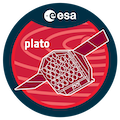Speaker
Description
Space-based photometry allows observing activity-induced brightness modulations at the surface of solar-type and low-mass stars, opening the door to surface rotation measurements and activity monitoring in such targets. The PLATO stellar analysis pipeline will provide such measurements for as many targets as possible, including exoplanet host-stars for which they will be important inputs to mitigate the impact of stellar activity in planet characterisation. In this talk, I will present the scientific abilities of the rotation and activity analysis module that will be implemented in the PLATO pipeline. The module will combine Fourier analysis, autocorrelation of time series and machine learning classifiers to measure both stellar surface rotation and long-term modulations related to stellar magnetic activity. The ROOSTER random forest methodology guarantees the completeness and the robustness of the automated analysis of rotation. I will extensively describe the data products of the module that will be of interest for exoplanetary science, such as the average stellar rotation period and the photometric activity index. Finally, I will present the performances achieved by the algorithms when homogeneously applied on a set of realistic simulated light curves. These simulations include spot evolution and migration, magnetic activity cycle, convective granulation, PLATO systematics, and random camera noise. Their analysis shows that PLATO should already be able to provide rotation periods and photometric activity indexes for a large sample after six first months of observation, and that the quality of these measurements will be refined as longer time series are acquired.

